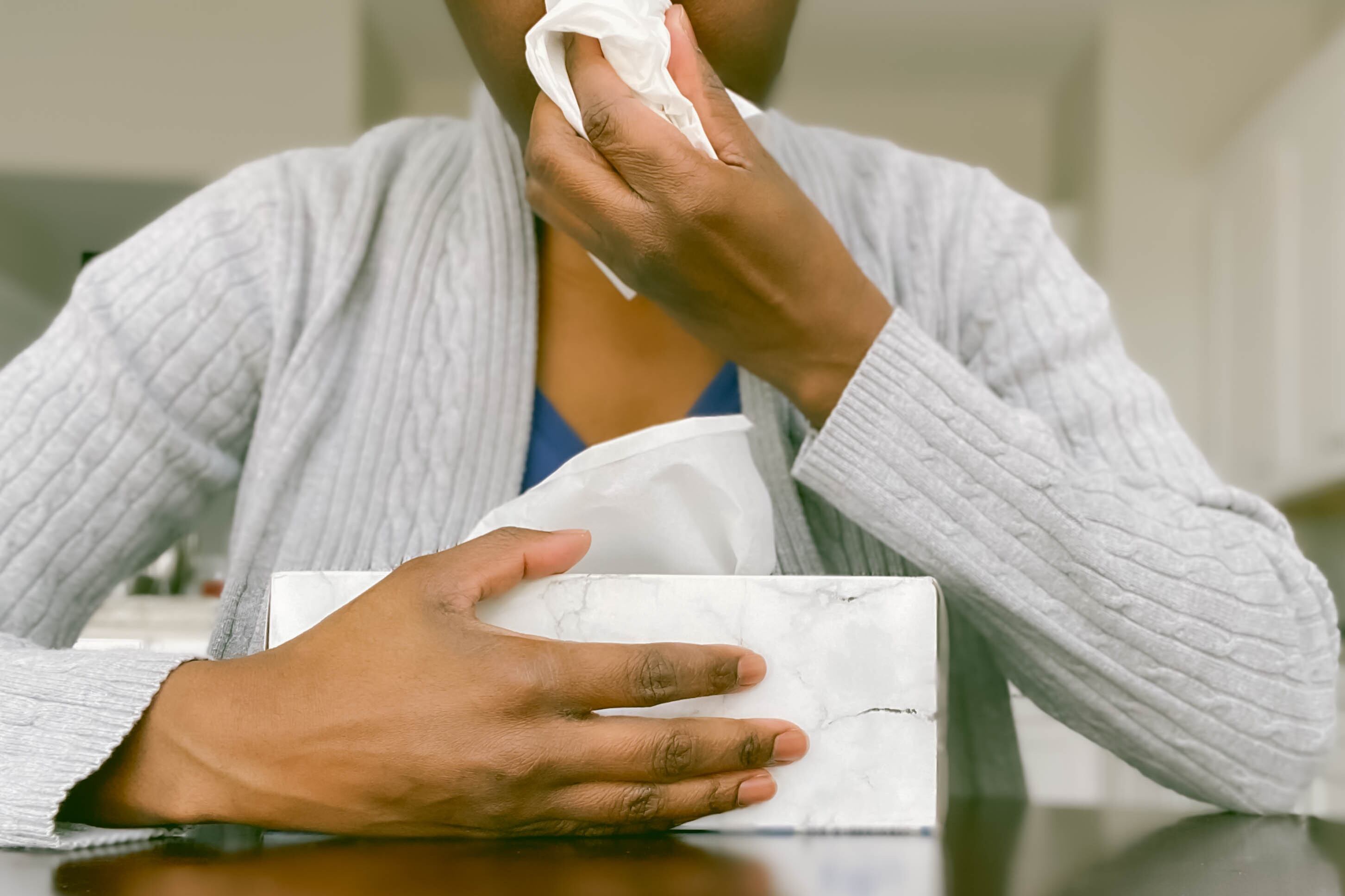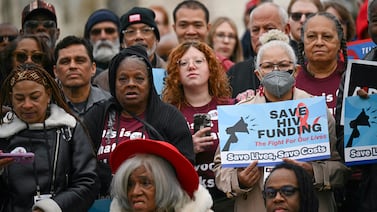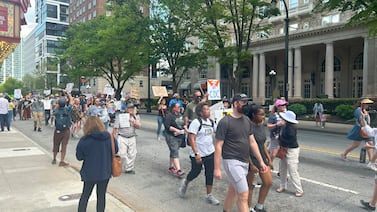Sign up for Your Local Epidemiologist New York and get Dr. Marisa Donnelly’s community public health forecast in your inbox a day early.
Have questions, comments, or ideas for future topics? Just reply to this email. I would love to hear from you.

It’s officially the respiratory season. The New York state and New York City health departments have begun releasing data. Time for a State of Affairs to kick us off.
Covid-19: minimal
Covid-19 transmission has continued to decrease in New York. Levels are considered “minimal.”
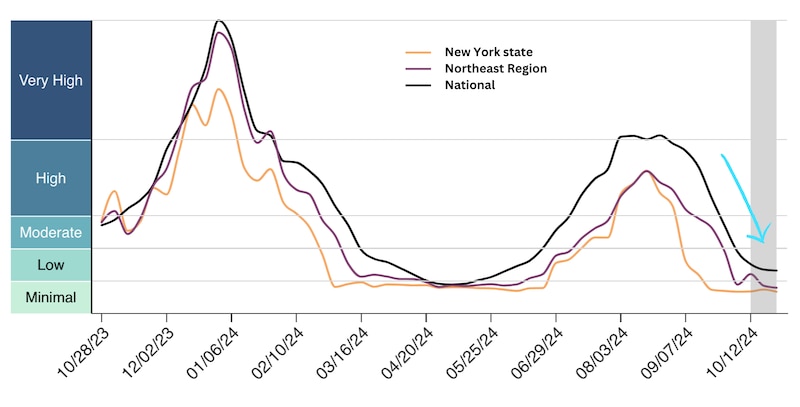
It’s the same story in the city — transmission of Covid-19 is low.
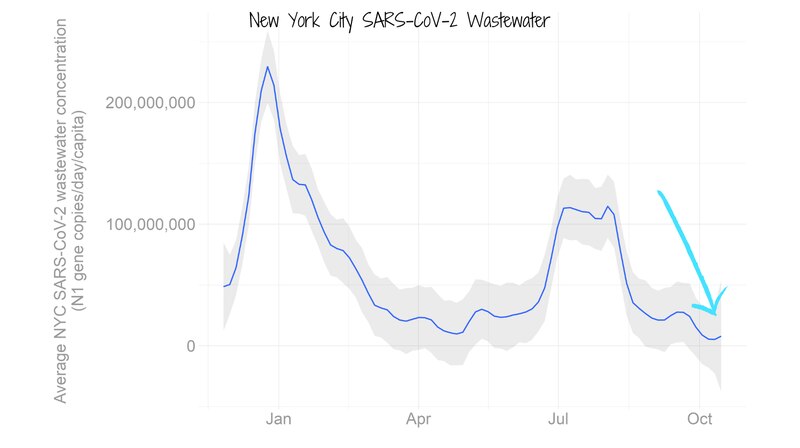
To continue the good news (there is a lot of it this week!), hospitalizations for Covid-19 have gone down among New Yorkers, especially those over 65 years old, who have the highest risk.
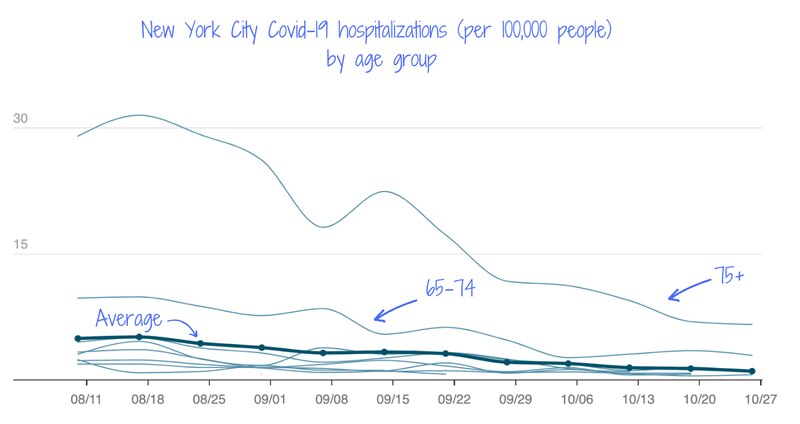
Influenza and RSV: low but increasing
Influenza is increasing in New York — the number of cases in the state increased by 42% last week. These increases are widespread across the state; influenza cases and hospitalizations are going up in all regions except for the Western region (but I expect things will begin picking up there soon).
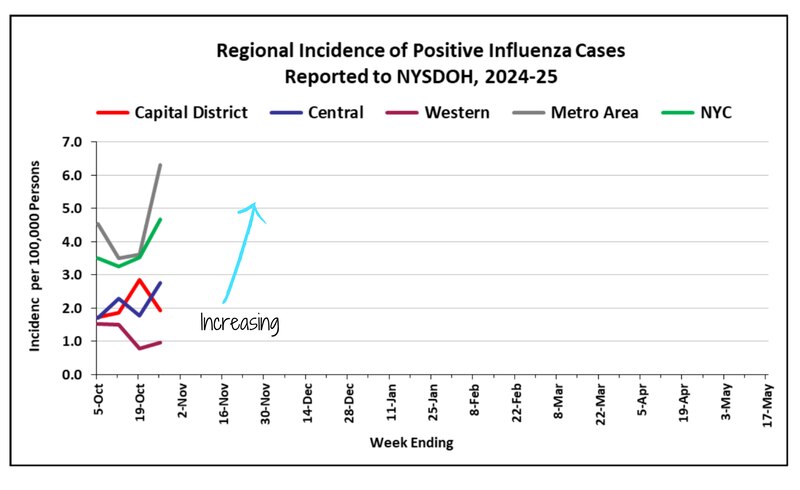
RSV data are harder to analyze because cases are not required to be reported to public health departments in New York. However, six New York labs (Liverpool, Albany, Syracuse, and three from New York City) participate in an optional Centers for Disease Control and Prevention surveillance program. Data for the most recent week show that positive tests for RSV remain low.
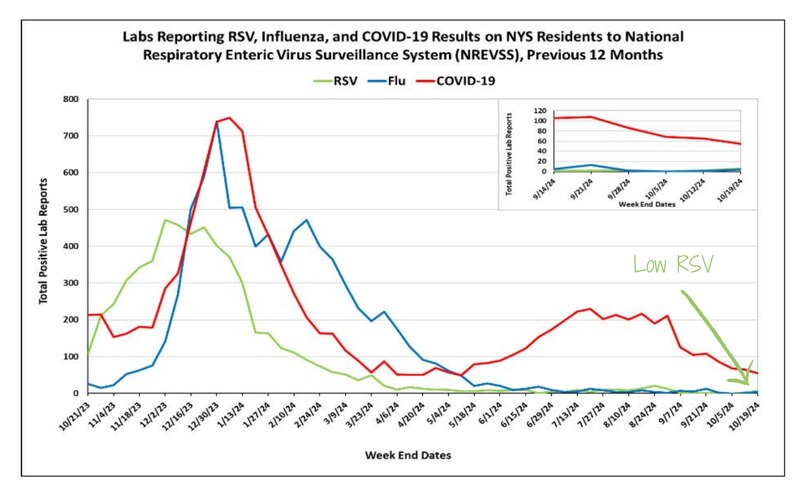
Data for the city show that positive RSV tests increased by 12% last week, but we’re still at very low levels.
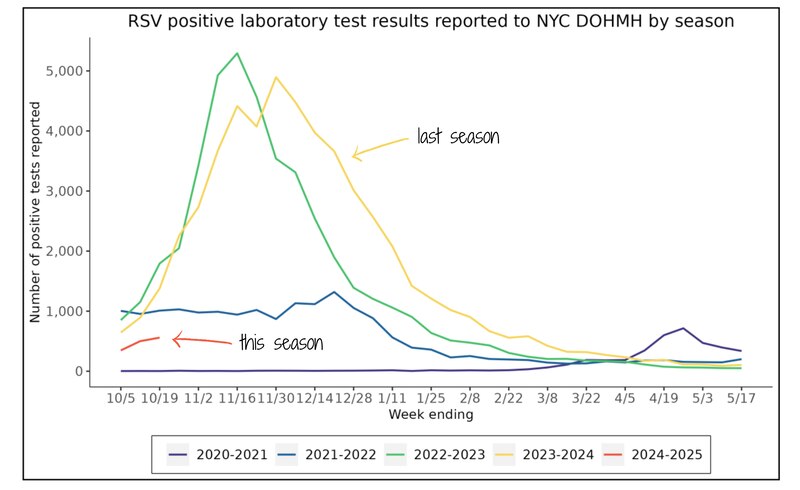
Severe influenza and RSV remain very low in New York state: Both are less than 0.1 hospitalizations per 100,000 people.
Other viruses: circulating
If you’re feeling sick, it’s most likely due to enteroviruses or rhinoviruses, which cause the common cold, or parainfluenza viruses, which also cause cold or flu-like illness. Those are testing very high, which is normal once kids go back to school.
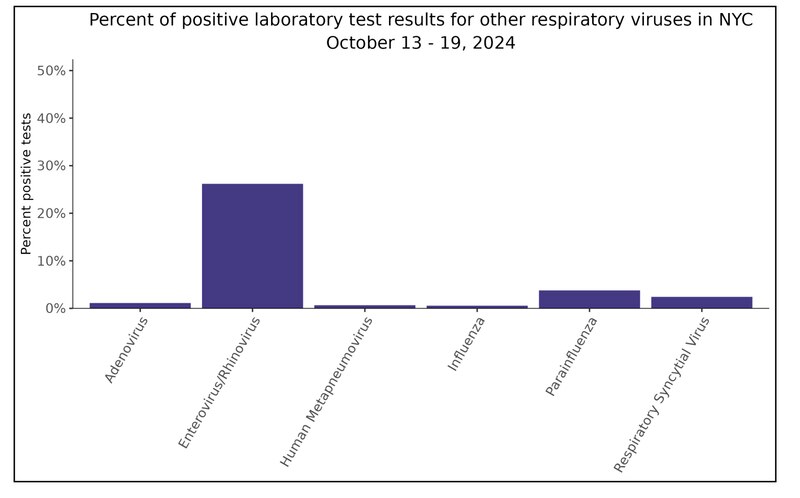
Typically, these infections are milder, but they can still be annoying. If you are feeling ill, wearing a mask and limiting social gatherings are ways to slow down disease transmission.
It’s still a great time to get your vaccines
Ideally, we want to get these before respiratory waves start, as they are a prevention tool. The time is now!
- Influenza and updated Covid-19 vaccines are available throughout New York City; find locations using the NYC Vaccine Finder, including sites offering free vaccines for people without insurance.
- Vaccination locations throughout the rest of New York state can be found at Vaccines.gov.
- The New York State Vaccines for Adults Program provides vaccines at no cost to underinsured, eligible adults throughout the state; find more info here.
- RSV vaccines and monoclonal antibodies are available for a subset of people (pregnant people, older adults, and babies). YLE National has a great post on how effective these treatments were in preventing severe disease last year.
Bottom line
Respiratory diseases are still low, but influenza and RSV are starting to heat up, marking the start of the respiratory season. Now is a great time to consider getting your fall vaccines!
Love,
Your Local Epidemiologist
Dr. Marisa Donnelly, a senior epidemiologist with wastewater monitoring company Biobot Analytics, has worked in applied public health for over a decade, specializing in infectious diseases and emerging public health threats. She holds a PhD in epidemiology and has led multiple outbreak investigations, including at the California Department of Public Health and as an Epidemic Intelligence Service Officer at the Centers for Disease Control and Prevention. Marisa has conducted research in Peru, focusing on dengue and Zika viruses and the mosquitoes that spread them. She is Healthbeat’s contributing epidemiologist for New York in partnership with Your Local Epidemiologist, a Healthbeat supporter. She lives in New York City. Marisa can be reached at mdonnelly@healthbeat.org.

